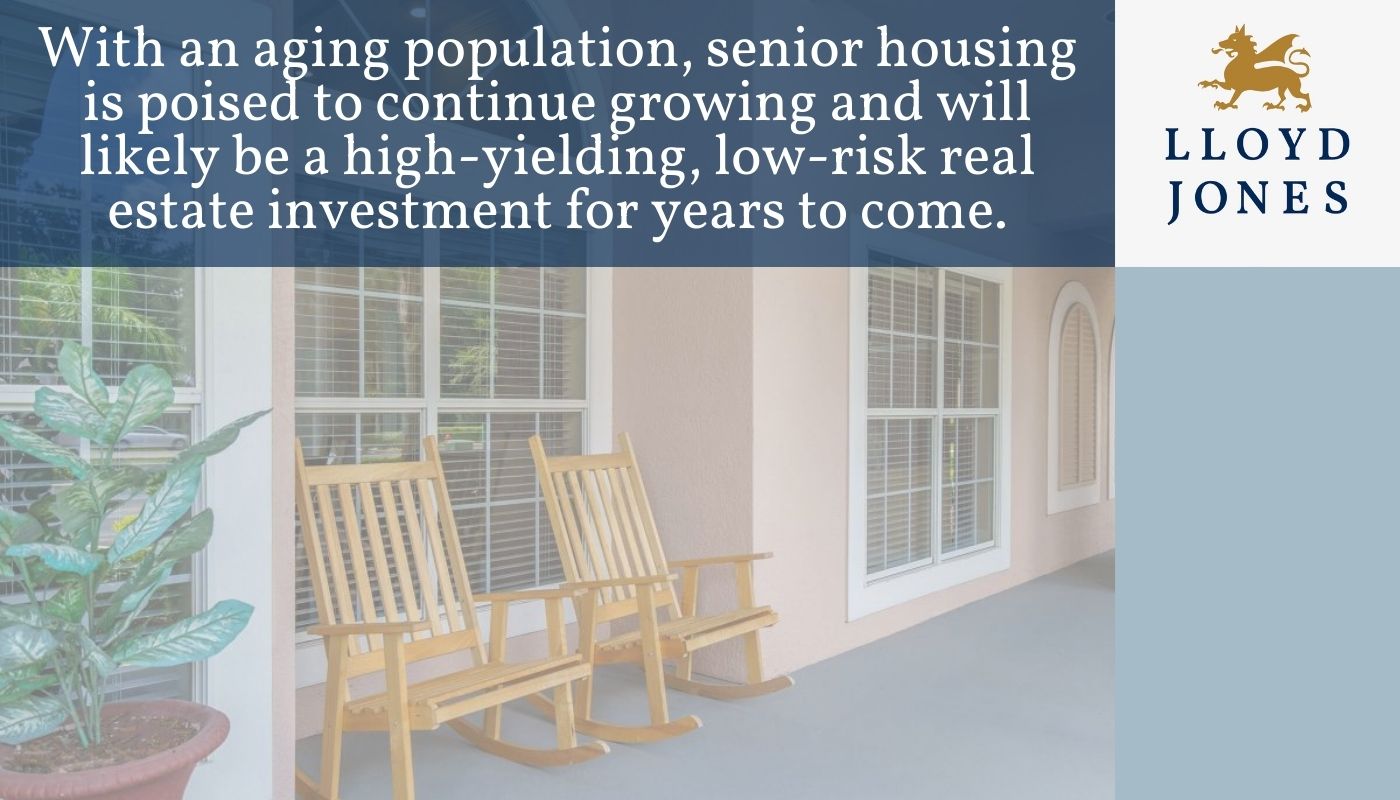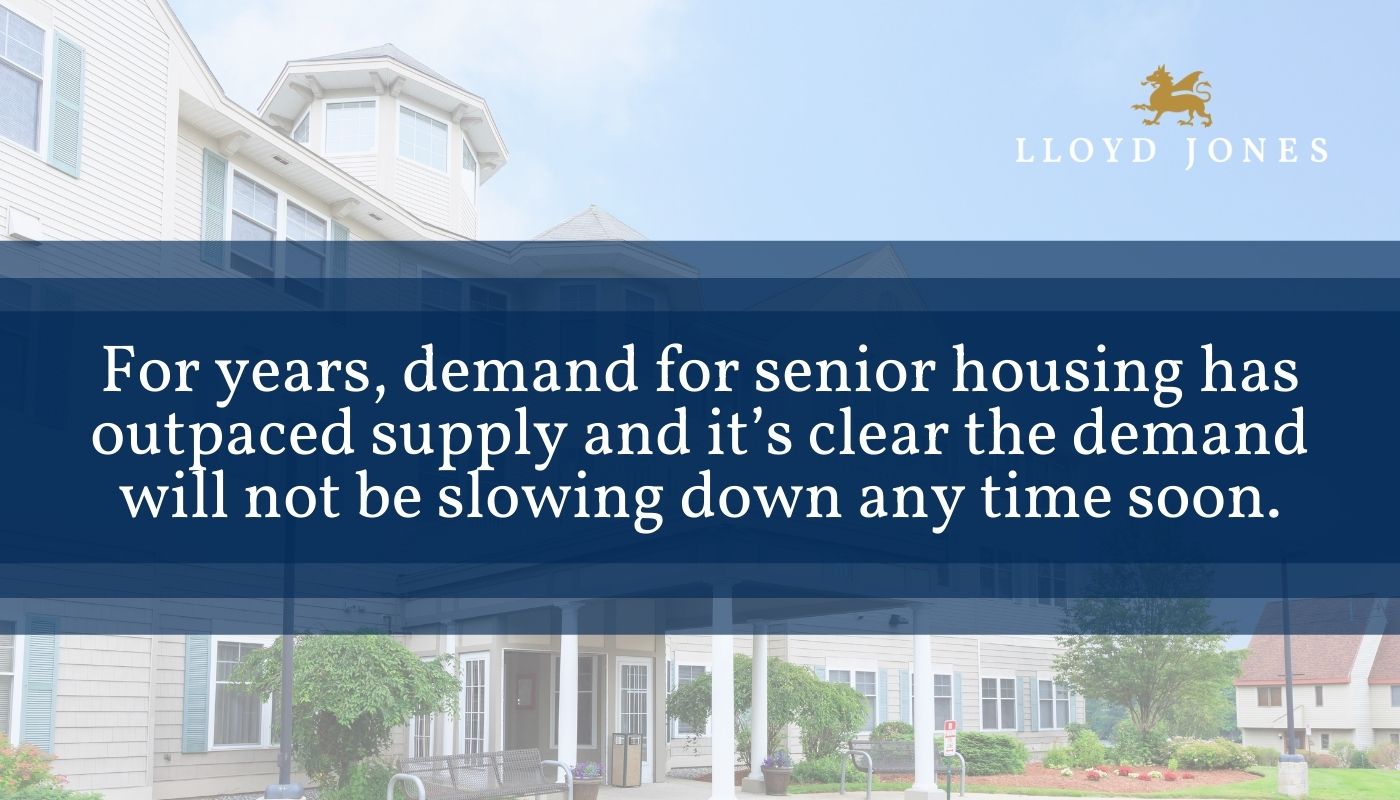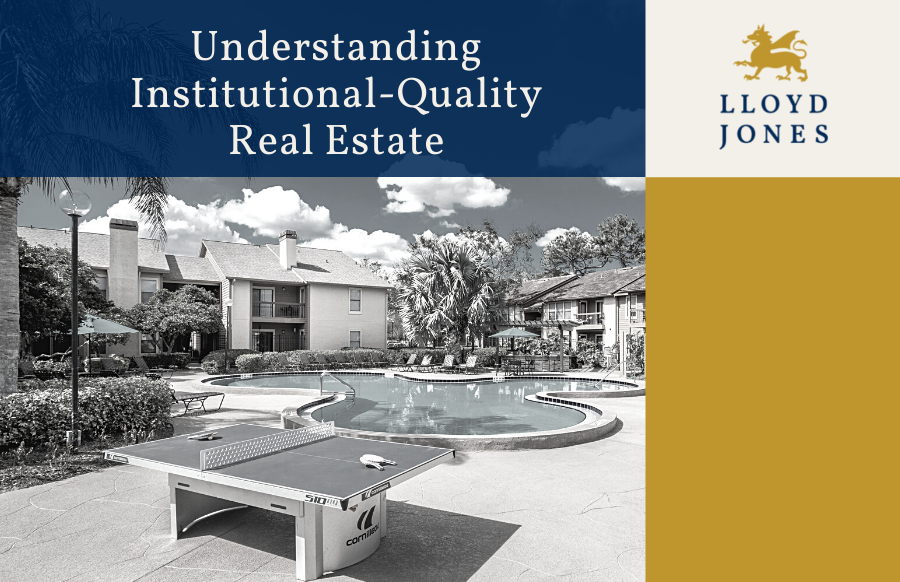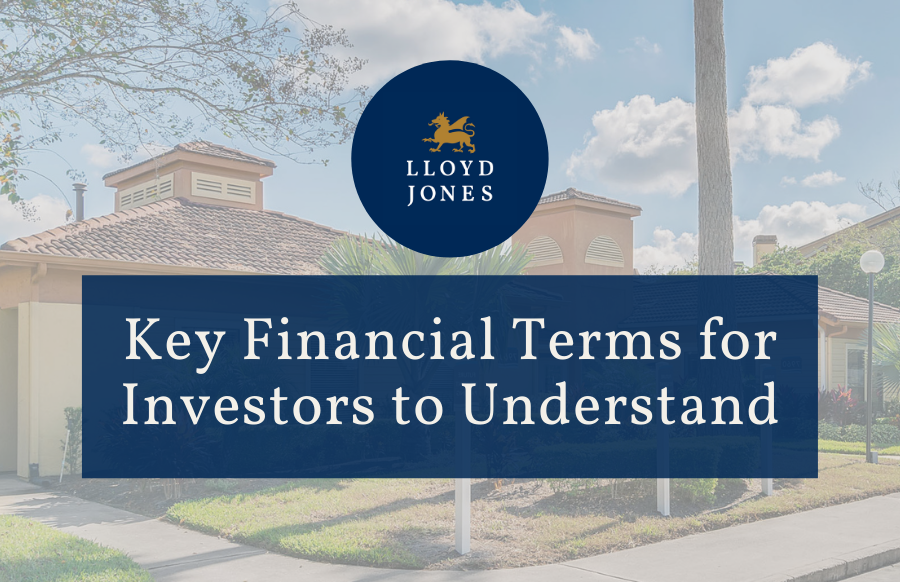An asset class gaining in popularity over the last several decades, senior housing as an investment has consistently outperformed the market through all economies, providing a stable ROI for investors. With an aging population, senior housing is poised to continue growing and will likely be a high-yielding, low-risk investment for years to come.

One of the biggest challenges we face as investors is deciding what investment tools match our risk tolerance and long-term goals. Most of us are looking for investments that command a decent return, will remain stable through the highs and lows of the economy, and don’t require a lot of time or overhead to manage. There are many attractive options in the market checking all the boxes above, all with varying levels of minimum investment and potential for risk. Senior housing will likely be near the top of the list when it comes to high-yield commercial real estate investments because of its resiliency to market changes and long-term positive outlook. Senior housing seems to be unique in how it continually outperforms market conditions and economic trends making it a great addition to investment portfolios.
An Overview of America’s Aging Population
Every year, the American population gets older. In fact, in the last 10 years, the average age of all Americans has gone from 37 years old in 2011 to 38.3 years old in 2021. This year, the oldest baby boomers have turned, or will turn, 75, while the youngest is 57 years old. Born between 1946 and 1964, baby boomers comprise the largest portion of the US population (roughly 76.4 million; 21.45% of the population) making up the backbone of the economy for the last several decades and will soon be the largest retired and elderly population in the country. Today, there are about 23 million members of the generation before baby boomers (the Silent Generation) meaning there are about 3 times more baby boomers than Silent Generation. This indicates an increased need for senior housing and a reason to begin preparing our infrastructure to handle the growing senior population or risk our healthcare system and senior living facilities becoming overwhelmed.
What will the demand for senior housing look like in 15 – 30 years compared to today? Currently, about 810,000 Americans live in a senior living facility (about 2% of the senior population) and statistics show 7 out of 10 people will require a stint in an assisted living facility in their lifetime. As the baby boomer generation approaches retirement age, the number of senior citizens is set to double by 2036 and triple by 2049. This increase in the number of senior citizens will likely lead to an elevated demand for senior housing in every subtype, creating investment opportunities.

The Main Types of Senior Living
Not all senior living homes are created equal. In addition to the cost of care at different facilities, with options for most budgets, the services offered and living arrangements can look very different from one facility to the next. When evaluating subtypes within senior living to invest in, understanding the differences between property subtypes can be helpful, as the cost to build, maintain, and manage a facility can vary drastically. Here are the most common senior housing options:
Age Restricted
Not every senior housing option comes with built-in assistance with daily tasks. Age-restricted communities, for example, are communities catering to residents who want to maintain full autonomy while living near like-minded individuals. Age-restricted communities, as defined by HOPA (Housing for Older People), are housing limited to seniors either 55+ or 62+ and can be single-family houses, apartments, condos, or any combination and can either be rentals or for-sale communities. They don’t include any services, but often have a variety of community activities residents can partake in.
Independent Living
At the lowest end of the care spectrum, independent living facilities are designed for seniors who want to retain the autonomy of their daily life, without the responsibility of home maintenance, daily chores, and cleaning. One of the main draws of independent living communities is the ease of life residents can enjoy because there are typically housekeeping, laundry, activities, and meal services included in the fees to living in the facility.
Assisted Living Community
Assisted living communities are designed for residents who need assistance with some of their activities of daily living (ADL) in order to live independently. ADLs are those skills required to manage one’s basic physical needs including personal hygiene and grooming, dressing, toileting, eating, and transportation. Like independent living communities, assisted living facilities offer a congregate living lifestyle with meals, housekeeping services, and individual apartments for residents. Typically, assisted living units have limited kitchen appliances. Assisted living communities cater to residents who don’t need the intensive care found in a nursing home.
Memory Care
Sometimes found as a department within an Assisted Living Community, memory-care facilities take care of patients with dementia and Alzheimer’s. Memory-care facilities combine a safe and structured environment with a specialized staff equipped to handle the special challenges of dementia and Alzheimer’s to provide the residents with the tools and care they need to make daily life easier on them.
Nursing Home
Unlike other senior living facilities, nursing homes provide skilled nursing services around the clock for residents who can’t live on their own. Staffed with physicians and nurses, these facilities work with individuals with either physical or mental challenges preventing them from maintaining a normal life without 24/7 supervised attention.
Continuing Care Retirement Community (CCRC)
CCRCs provide all levels of care on one campus. They are designed to give residents a continuum of care, so they never have to leave the community as they become more frail, allowing them to either move to a different section of the facility or receive more specialized care where they are. These facilities are usually large and can contain apartment units, assisted-living units, memory-care buildings, even skilled nursing. Some even offer individual cottages for independent residents who need no assistance upon move-in. CCRCs can be complex with several moving parts and a large staff to manage. From a resident cost perspective, CCRCs typically require a sizeable up-front buy-in.
The Rise of Quality In-Home Care
As an alternative to moving into senior housing, in-home care has become an attractive option for seniors. Healthcare costs continue to rise, creating an increasing economic strain on our senior population. Furthermore, many seniors are reluctant to move from the family home. By bringing in help as needed, they can remain in their homes, at least temporarily. Such help might involve personal services, such as assistance with bathing, eating, and medication management, as well as housekeeping, cooking, and transportation. While home care can be a less expensive option—if services and hours are limited—a senior-living community offers many advantages.
For instance, in senior housing, the fees include the cost of housing, maintenance, taxes, insurance, utilities, meals, and in many cases, nursing staff on call 24/7. Also, for residents who want to remain in the same place once they move into a facility, there is a trend in senior housing to bring in optional in-home care services for residents who need additional services not offered by the housing community. This way, someone can age in place, even in an age-restricted or independent living community.
When evaluating the pros and cons of hiring in-home care versus moving into a facility, it is important to consider a few disadvantages to staying in one’s home. First, most homes aren’t designed to accommodate equipment like walkers or wheelchairs, which can make maneuvering through hallways, up and down stairways, and in and out of showers difficult. It is possible, but often more challenging than it would be in a facility designed for seniors. Also, in-home care makes socializing more challenging. Social isolation is associated with a 26% increase in the risk of mortality and is said to be equivalent to smoking 15 cigarettes a day.
Why Senior Housing Will Remain Resilient to Market Change

With America’s senior population set to double within the next 15 years, and triple soon after that, senior housing is sitting at an interesting precipice; the need for senior housing is growing, and the supply is not growing at the same rate. For years, demand for senior housing has outpaced supply and it’s clear the demand will not be slowing down any time soon. According to an article on SeniorHousingNews.com, there will need to be an estimated 1,000,000 new senior housing units by the year 2040, adding approximately 62% to the current senior housing stock. This increase is based on the average age of new residents being 80 years old. If the average age drops back to 75 years old, where it was previously, the number of additional units needed could be much greater.
In addition to an aging population, the mortality rate in America has also increased over the last 50 years. In the 1970s, a 65-year-old could reasonably expect to live for 15.2 years based on average life expectancy. By the late 2010s, this has risen to 20.4 years. This added life expectancy can be largely credited to advances in healthcare and a government that has made it a priority to provide healthcare to populations who may otherwise not be able to afford the care they need, ultimately resulting in a reduction of acute illness.
The Biggest Challenges Facing Senior Real Estate
It’s a Hot Property for Now
Senior housing has historically been available only to institutional investors with big check books. Not only is the purchase price an issue, but the management is labor intensive and highly regulated requiring a professional operator. REITs and other institutional investors have made up the bulk of senior housing investors. And the demand for senior housing has attracted the attention of more and more institutions anxious to enter the senior housing market. However, it has also become easier for individual investors to participate as new investing platforms have come to market requiring smaller initial investments.
With the understanding of the role senior housing will likely play in the coming decades, more investors are getting in on the action. This is potentially great news for the industry as a whole and will lead to the development of new high-end facilities and the repositioning of existing communities to meet the demographic middle-market demand. Perhaps the most important factor and largest differentiator in senior housing projects will be the quality of facilities. As more senior housing options come to the market, consumers will have more choices in costs and services. Today, many facilities have waiting lists that are months or years long. One way for investors to stand out is by providing a quality product where people want to live.
Healthcare Supply and Demand Are Uneven in America
Another challenge facing senior housing developments is the availability of a qualified healthcare workforce. Depending on the type of facility, staff might include certified nursing assistants (CNAs), nurses, and/or physicians, all of which have become difficult to find. Healthcare workers are stretched thin these days and there is a disproportionate number of open positions and healthcare workers to fill them.
As a country, we are getting older and have progressively become less active, leading to a higher rate of chronic illness and a higher demand for healthcare workers, specifically lower-skilled workers like home health aides and nursing assistants. Often, the staff of senior housing facilities is comprised primarily of these lower-skilled workers with only a handful of nurses and doctors on staff. Therefore, as the supply of healthcare workers decreases, hiring qualified and competent healthcare staff will become increasingly challenging.
Conclusion
As far as commercial real estate investments go, senior housing has become one of the premier investments thanks to its incredible market resilience and built-in permanent demand. While it isn’t without its challenges, senior housing has proven itself as an excellent investment for the right investor.
Due to the operational demands senior housing faces, investors must be well informed and aware of extensive staffing and regulatory requirements. Investing with an experienced partner or crowdfunding platform will help mitigate, or eliminate, the hands-on nature of the senior-living business while still allowing you to participate in the healthy profits senior housing provides. Senior housing is an exciting and stable area to invest in and, if it fits your investment criteria, might be the right fit for your portfolio.


